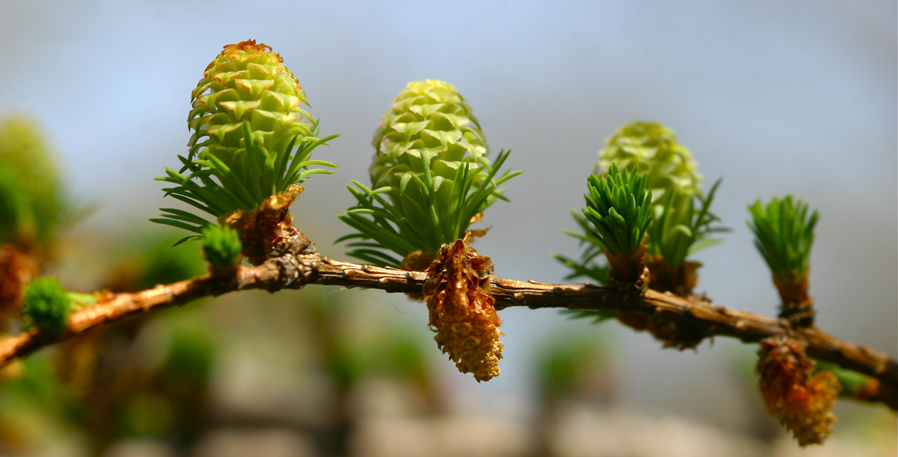New cones of the tamarack tree, (Larix laricina), at Ashbridge’s Bay Park in mid-April. © BCP 2010
Tamaracks, one of our land’s most beautiful native trees, are really very special creatures. They’re deciduous conifers.
Huh? Didn’t we learn in grade school that there were two kinds of trees — deciduous ones like oak, maple and birch, and evergreens like pine, spruce and fir? The first category, of course, are known for losing their leaves every fall after the glorious display of colour they put on. The second hang on to their leaves — needles, actually — all year round. In fact, we mostly think of conifers, the trees that bear cones, as being one and the same as evergreens.
That’s usually tree, but not always. For the trees we call tamaracks (Larix laricina) are members of the larch family that bear cones, yet are deciduous.
After the needles turn a glowing amber in the fall, they all fall relatively quickly in a golden shower.
In spring, tamaracks burst forth with hundreds, thousands, of tiny new cones that look for all the world like . . . lime green pineapples! (See above photo if you doubt this description). After a few weeks, these tiny fruiting bodies turn fuschia, and eventually grow into structures that are more readily identifiable as cones.
For me, the limey intensity of new tamarack cones is one of the surest, most beautiful markers of spring. And we’re blessed to have dozens of these beautiful-in-all-seasons trees at our local park.
© BCP 2010




no comments